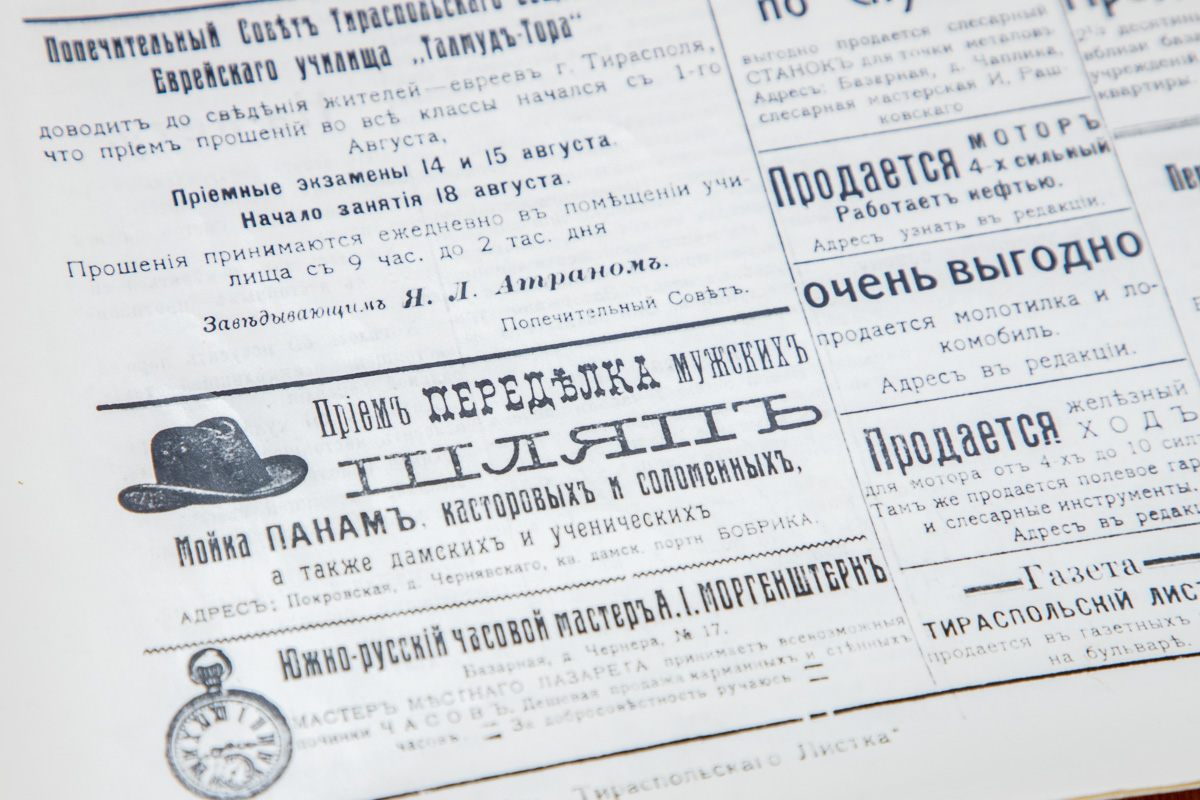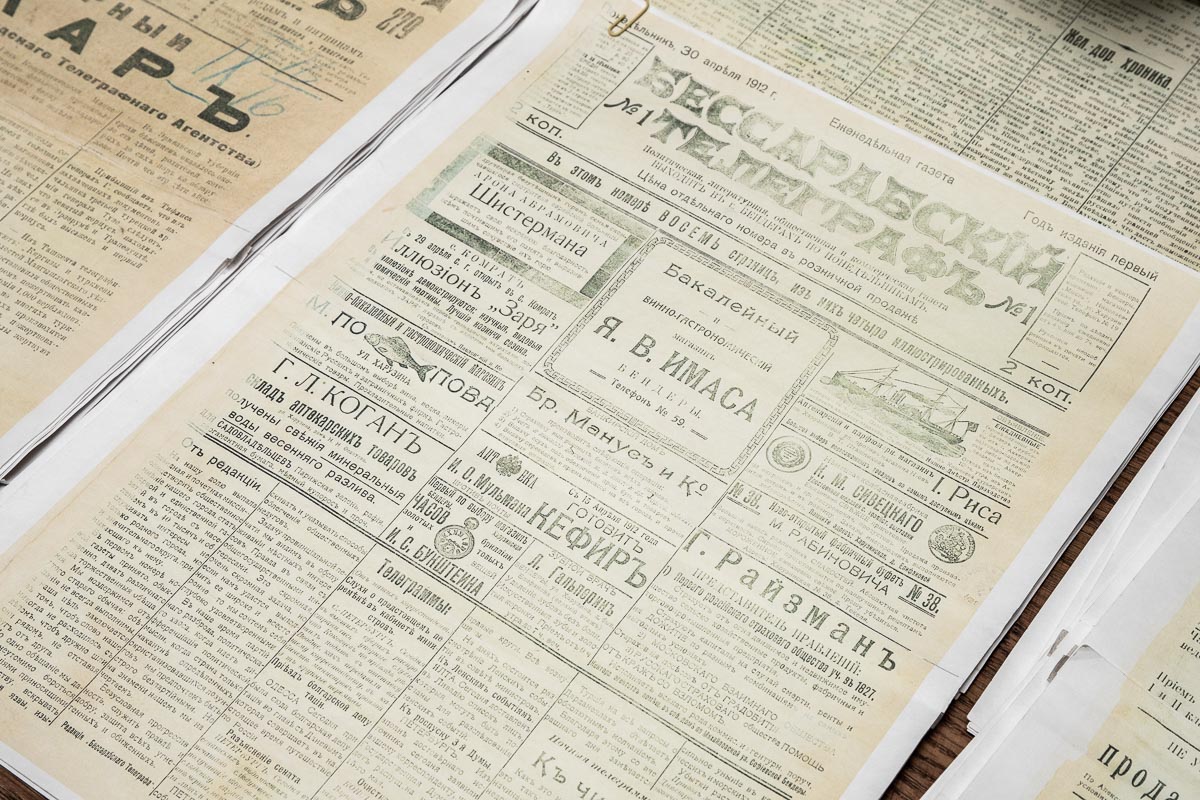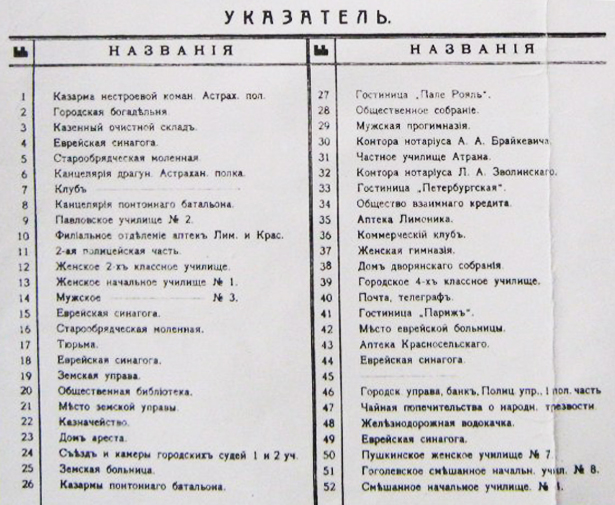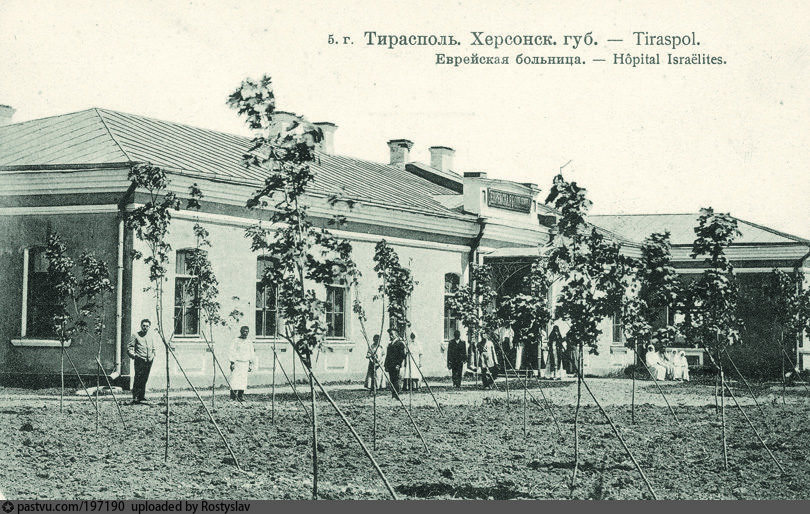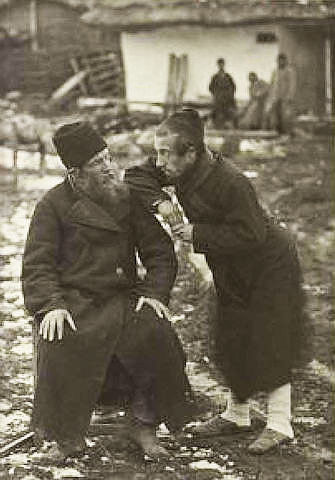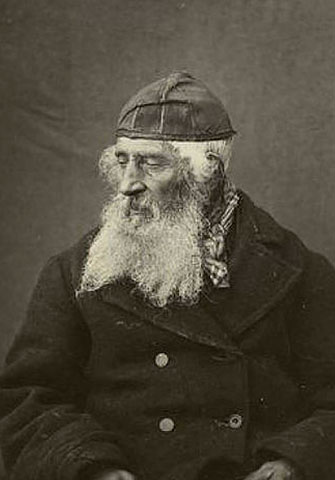Jewish community of Tiraspol
The bulk of the Jewish population settled in Bessarabia and the territory of present-day Transnistria after the partition of Poland in 1772-1775 and the Russian-Turkish war of 1787-1791. Jews settled in Novorossia in the 18th century according to the rescript of Catherine II of January 27, 1792. Jewish settlers came from the Volyn and Podolsk provinces.

Jews appeared in Tiraspol immediately after the city was founded in 1792, in 1795 their number was 464 people. In 1863, there were three stone synagogues and a private Jewish school in Tiraspol.
“Trade in all its forms is a special occupation of the Jewish population of the county; every Jew looks at any other occupation as temporary and engages in it only until the first opportunity to start trading (...) a Jew artisan never misses an opportunity to put into circulation the money he has ”
“The sale of fruit was on different terms. Jews living in the villages of state peasants, where horticulture and horticulture were developed, bought several crops. For example, three crops over a period of 10 years, and paid an advance payment of 30-50 rubles for a garden with an area of about one acre, or, say, 8 crops in 15 years. For a garden of at least one tithe, consisting of apple trees, pears, nuts, plums, they paid 100 rubles, with the right to harvest annually for 12 years. For a vineyard with 1,000 bushes producing 500-550 buckets of wine, an advance payment of 140 rubles was paid for a 10-year harvest. Visiting Jews and Great Russians of Plosky usually bought crops for one year and paid more. As, however, and the merchants from Tiraspol and Odessa who hunt for this. From Tiraspol, fruits in fresh and dried form went far beyond the borders of the province: to Kyiv, Kharkov, Brest, Bialystok and other cities of Russia.
According to the 1897 census
in the Tiraspol district, there were 240 thousand inhabitants; of them 23811 Jews; including in Tiraspol about 32 thousand inhabitants, among them 8668 Jews (27%).
At the beginning of the 20th century
Jews already made up a third of the population of Tiraspol. A Jewish hospital was opened in the city. It was located at the end of Bazarnaya (now Sverdlov) and Pokrovskaya (now October 25) streets, behind Kurganny lane (near the University).
On the map of 1906
Jewish street is marked in Tiraspol. There was a Jewish school, a club, 18 synagogues, the rabbi was I. Zeiliger.
In 1916
on Privoznaya Street, No. 32, the “Jewish public school “Talmud-Torah” was located. In the same year, the accountant of the Tiraspol Savings and Loan Association B.I. Leo left his service and opened a Jewish elementary school. In the same year, Reveka Markovna Zelterman opened a higher primary school in Tiraspol. She also owned a women's Jewish school.
In 1926
the population was 29.7 thousand inhabitants, including Russians - 54.8%, Jews - 29.4%, and Moldovans - 1.4%.
In 1797-1816, 105 settlements appeared on the territory of the Tiraspol district, including 7 Jewish colonies.
In Tiraspol:
- In 1795 there were 15.8% Jews.
- In 1799 there were 465 Jews
- In 1847, about 1406 Jews;
- In 1870 (according to the census): 3616 Jews out of 17 thousand inhabitants of Tiraspol.
- In 1897 (according to the census): 8668 Jews out of 32 thousand Tiraspol residents.
…“The Jews sacredly observed their religious rites and customs. On Saturdays, elderly Jews walked in groups on the main street, Pokrovskaya, dressed in long frock coats. They politely bowed to the wife of the pharmacist Lemonnik, who was sitting in an elegant dress on the porch of her house in an armchair.
The Jewish population was involved in most areas of activity: business people, artisans, merchants, workers, people of free professions - they contributed to the economic and cultural development of the region. Synagogues and prayer houses, charitable societies, hospitals and gymnasiums, melameds and pharmacists, editors and photographers, musicians and artists - this was what Jewish life in Tiraspol and Bendery consisted of.
The isolated position of the Jewish population, closed to non-Christians, contributed to the preservation of traditions and culture. Compact living practically excluded the possibility of assimilation and made mixed marriages extremely rare. Children from Jewish families studied at a public elementary school and at the same time at a cheder, where they studied Hebrew and the basics of Judaism. Community projects were funded by the Jewish population.
Synagogues were built at the expense of believers, they provided sections for men and women. According to the accepted order, each parishioner bought a place closer to the Aron Kodesh, where the Torah was kept, and the more expensive the place was.
The distinguishing features of the Jewish population include the fact that they spoke many languages, assimilating the language of the environment. This helped the success of trade and crafts.
Before the start of World War II, most of the Jews of Tiraspol, along with the rest of the population, were evacuated deep into the Soviet Union. According to some reports, from 1.5 to 3 thousand Jews died in Tiraspol during the German-Romanian occupation from 1941 to 1944. According to other information, the death toll may be 12 thousand people.
Holocaust in Transnistria
More than a dozen concentration camps and ghettos were created on Transnistrian soil. One of the first tasks of the occupying power was "final decision" Jewish question.
Jews in Pridnestrovie
Jews have long lived on the territory of Transnistria, mainly in ancient cities. Breeders, merchants, financiers, musicians, writers - the contribution of Jews to the economy and culture of the region is difficult to overestimate.
Community today
The Jewish community today has about 500 people permanently residing in Tiraspol and thousands of our countrymen who have emigrated to Israel, Canada, America, Germany and other countries. Here are relatives of many of them: both living and resting.
Here, in the Jewish community of Tiraspol, there is a synagogue "Keren Or" (Ray of Light), traditional Jewish holidays are held, great attention is paid to preserving the memory of the victims of the Holocaust. To the best of our ability, we monitor Jewish cemeteries and other burial places.
Despite the fact that from the beginning of the 90s until 2000, most of the Jews of Tiraspol emigrated, there are always people who discover the Jewish roots of their families, who have a desire to learn about Jewish history and tradition. Jewish life in Tiraspol continues to exist and develop after hundreds of years of complex, tragic and ambiguous history.
Our activities are a living and vivid example of this.
